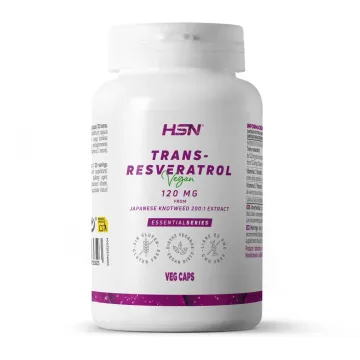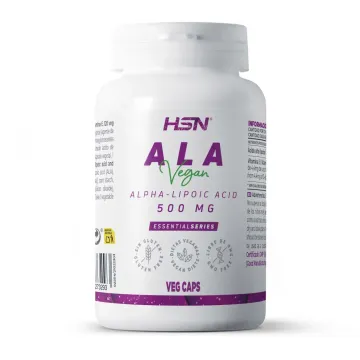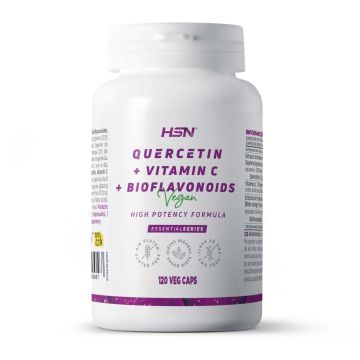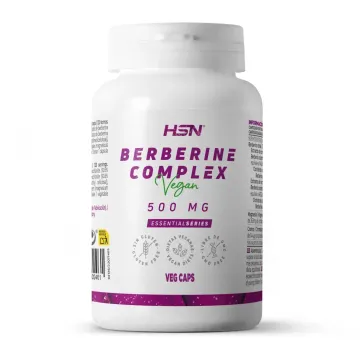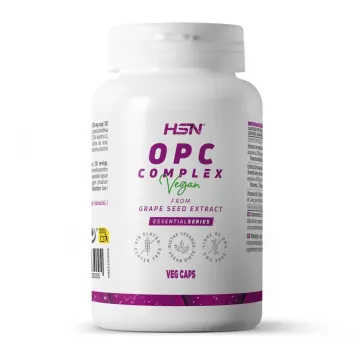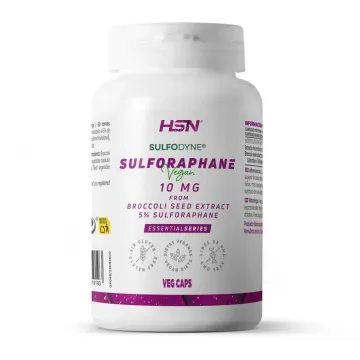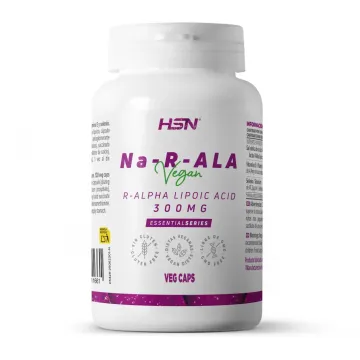- 300mg of pure R-ALA per vegetable capsule - Sourced from 365.8mg of R-ALA Sodium Salt.
- Pure 'Rectum' (R-) isomer of Alpha Lipoic Acid - The naturally occurring form of ALA.
- Sodium Salt form - Authentic R-ALA stabilised for improved bioavailability.
- Guaranteed absence of polymerisation - Total integrity of R-Alpha-Lipoic Acid for your nutrition.
- Formula fortified with Vitamin E and Selenium - Important essential nutrients with antioxidant power.
- 0% 'Sinister' (S-) isomer content - R- enantiomer fully guaranteed. High concentration.
- Food supplement suitable for vegetarian and vegan diets.
Watch out!
Be careful when choosing to purchase R-ALA, as many companies sell quantities of 'R-ALA' that are actually R-ALA salts, making the indicated quantity of R-ALA higher than the actual quantity, misleading the consumer with non-transparent labelling.
Our supplement provides 300mg of R-Alpha-Lipoic Acid obtained from 365.8mg of Na-R-ALA

R-Alpha Lipoic Acid 300mg - Today's most prominent ALA
R-Alpha Lipoic Acid 300mg from EssentialSeries is HSN's food supplement based on the R-isomer of Alpha Lipoic Acid, in a stabilised form thanks to its presentation in the form of a sodium salt. The highly concentrated formula has been supplemented with a significant supply of two important micronutrients: Natural vitamin E and Selenium in the form of Selenomethionine.
Alpha Lipoic Acid is a naturally occurring compound with the chemical name 1,2-dithiolane-3-pentanoic acid, also known as thioctic acid. It is a compound commonly found in the mitochondria of living cells. It is an 8-carbon fatty acid with 6- to 8-carbon thiol groups, first isolated in 1951 by the scientist Reed, dating its first use as a clinical compound to 1959 in a US hospital.
R-Alpha Lipoic Acid 300mg from HSN is a formula suitable for vegan diets, made with R-ALA without Genetically Modified Organisms.
A superior form of Lipoic Acid + All the HSN Guarantees
100% Rectum Enantiomer. No S- enantiomer in its composition.
Our standard Alpha Lipoic Acid is the most commonly used combination of the racemic ALA R-/S- mixture in scientific studies. You can find it in:
However, this product is our Na-R-ALA version which exclusively provides the R- enantiomer of Alpha Lipoic Acid. All raw material analyses and verification of laboratory-tested values show that 100% of the composition of the HSN formula provides pure R-ALA, with no S-ALA content in its composition. Only the natural form of ALA and nothing else.
Higher bioavailability. Studies show the superiority of the R-ALA
The reason for the duality of the positions of the ALA enantiomers is that the combination of the R- and S-ALA racemate is the most studied form, so its efficacy has been well proven and many users rate this very positively.
But scientific studies show that R-ALA, being the natural form of Lipoic Acid, the one that can be found in nature and whose dietary intake is important through food, may be superior.
Studies show that the R- enantiomer of ALA has a higher intestinal absorption than the mixture of R and S ALA.
Salehi et al. (2019) note that the time to reach maximum ALA concentrations is shorter in the R-isomer than in the S-isomer and that the maximum concentrations reached at equal doses are 40-50% higher.
The bioavailability of R-ALA is higher than the S-ALA-containing forms, with the advantage of the combination of both enantiomers being improved stability. The problem with R-ALA, although it may be superior in bioavailability, is that it polymerises easily, losing its properties. It is, therefore, necessary to stabilise it.

Stabilised form - Sodium Salt 'Na-R-ALA' to ensure effectiveness
Because of this, the effectiveness of R-ALA has come to be questioned in practice until the 'stable form' of R-ALA arrived. Its sodium salt or 'Na-R-ALA' has proven to be more stable than the 'base' R-ALA acid.
R-ALA gradually decomposes at room temperature and readily polymerises at temperatures above its melting point. Therefore, the stability of R-ALA is of great interest for its use. To achieve this conveniently and effectively, it has been associated with sodium to form a new complex 'Na-R-ALA' with guaranteed stability.
Studies such as that of Carlson et al. (2007) show that the sodium salt of R-ALA is less prone to polymerise. In addition to its improved water solubility, it shows a higher maximum concentration, as well as a shorter time to reach maximum concentration, than the R-ALA base or the racemic mixture of R and S ALA.
300mg of R-ALA base | Transparent and non-deceptive information. We explain the problem
Many companies in the market we have assessed are not transparent, or at least we believe that the information they provide may be misleading, why is this?
The sodium salt of R-ALA provides 18% of its composition in the form of sodium, and obviously, this sodium is not Alpha Lipoic Acid nor does it have the properties of ALA, it is only used to stabilise the form of R-ALA.
Our product provides 300mg of R-ALA per vegetable capsule. This 300mg of ALA comes from 365.8mg of the sodium salt of R-ALA, with 65.8mg of sodium.
For this reason, other companies declare the whole salt as R-ALA. Although they specify that it is Na-R-ALA, they do not declare the R-ALA content of the whole salt, leading people who do not know that part of it is sodium without the biological effects of ALA to believe that this fraction is also part of the same R-alpha Lipoic Acid.
At HSN you will find complete, clear, and transparent information about our products.
Product properties - Don't miss out on its benefits
The formula is characterised by the protection of cells against oxidative damage, thanks to its vitamin E content.
It also contributes to normal spermatogenesis, an effect attributed to selenium.
Sources of ALA in nature. Do we get Alpha Lipoic Acid in our diet?
ALA can be found in the form of the R- enantiomer in foods, mainly in fruits, vegetables, and red meat, especially organ meats. Some foods that provide significant amounts of Alpha Lipoic Acid are:
- Spinach.
- Broccoli.
- Tomatoes.
- Kidneys.
- Heart.
- Liver.
All the ALA in these foods is present in the form of a Lipolysin complex, a molecule of ALA bound to a molecule of the amino acid lysine, which is the form in which ALA binds to proteins for storage.

ALA does not accumulate in the body, hence its safety and lack of side effects. Unused ALA is practically eliminated in the urine 24 hours after use.
How long does it take to work? Does it affect differently by age or gender?
ALA is absorbed between 30 and 60 minutes after oral intake. At that point, it reaches its maximum concentration (being closer to 30 minutes for the R- form and 60 minutes for the R- + S- mixture).
The bioavailability of ALA is considered to be higher in older adults, as when compared to people between 18 and 45 years of age, it has been observed that they make better use of the same amount of Lipoic Acid.
No differences exist between men and women in the absorption of ALA at low doses, however, at high doses (600mg) women make better use of ALA than men.
Ideal supplements to combine with ALA. DON'T MISS THEM OUT!
R-ALA can be combined with any other product as it has no contraindications.
It is generally recommended for use in combination with Gluco Care.
As a compound, because of its relationship with the mitochondria, where ALA is found, it is recommended for use in combination with L-carnitine.
Bibliographical references
- Gosselin, L. E., Chrapowitzky, L., & Rideout, T. C. (2019). Metabolic effects of α-lipoic acid supplementation in pre-diabetics: A randomized, placebo-controlled pilot study. Food and Function, 10(9), 5732–5738.
- Ziegler, D., & Gries, F. A. (1997). Α-Lipoic Acid in the Treatment of Diabetic Peripheral and Cardiac Autonomic Neuropathy. Diabetes, 46(SUPPL. 2), S62-6.
- Kucukgoncu, S., Zhou, E., Lucas, K. B., & Tek, C. (2017). Alpha-lipoic acid (ALA) as a supplementation for weight loss: results from a meta-analysis of randomized controlled trials. Obesity Reviews, 18(5), 594–601.
- Salehi, B., Berkay Yılmaz, Y., Antika, G., Boyunegmez Tumer, T., Fawzi Mahomoodally, M., Lobine, D., … Sharifi-Rad, J. (2019). Insights on the use of α-lipoic acid for therapeutic purposes. Biomolecules, 9(8).
- Carlson, D. A., Smith, A. R., Fischer, S. J., Young, K. L., & Packer, L. (2007). The plasma pharmacokinetics of R-(+)-lipoic acid administered as sodium R-(+)-lipoate to healthy human subjects. Alternative Medicine Review, 12(4), 343–351.
 Before
Before After
After During
During Morning
Morning Afternoon
Afternoon Night
Night








